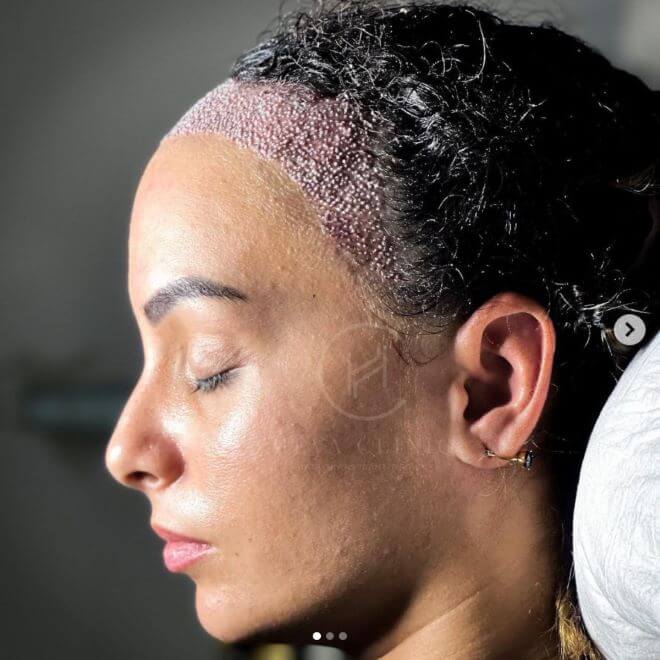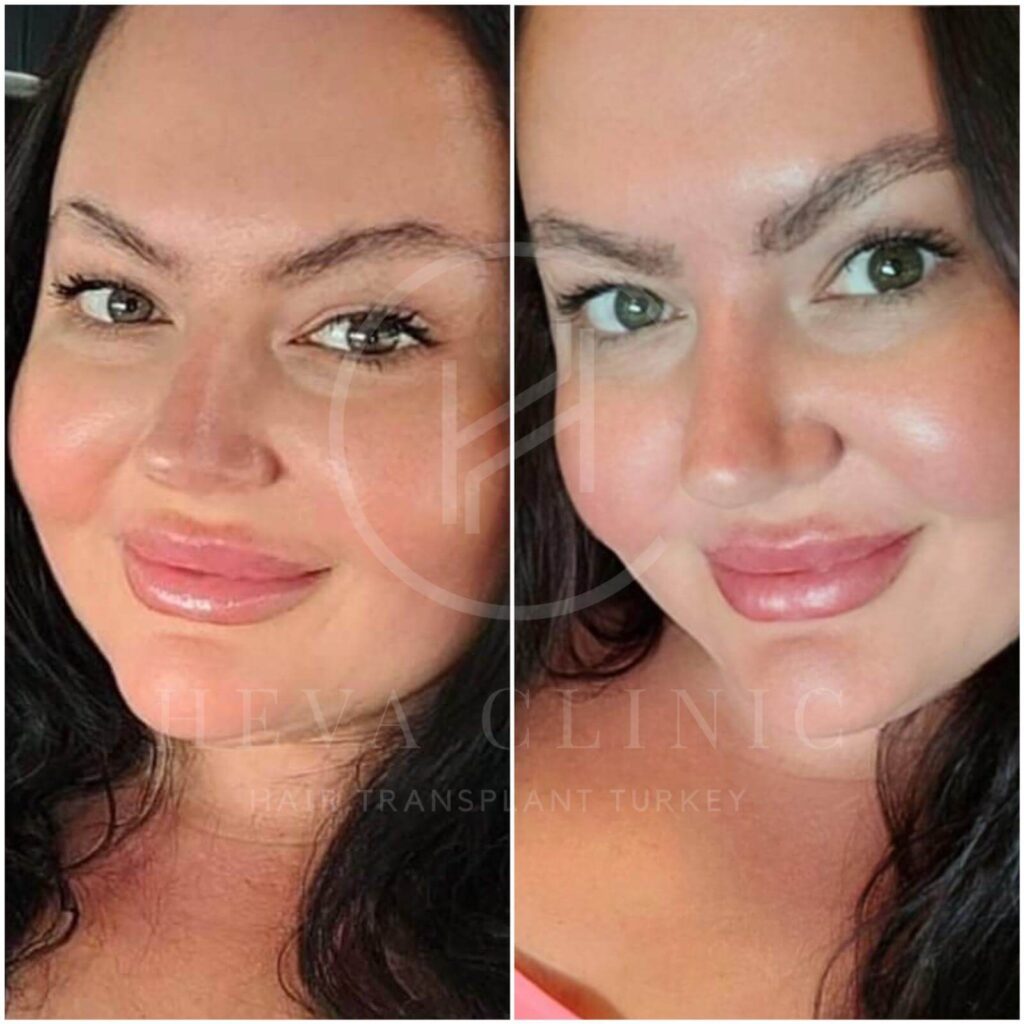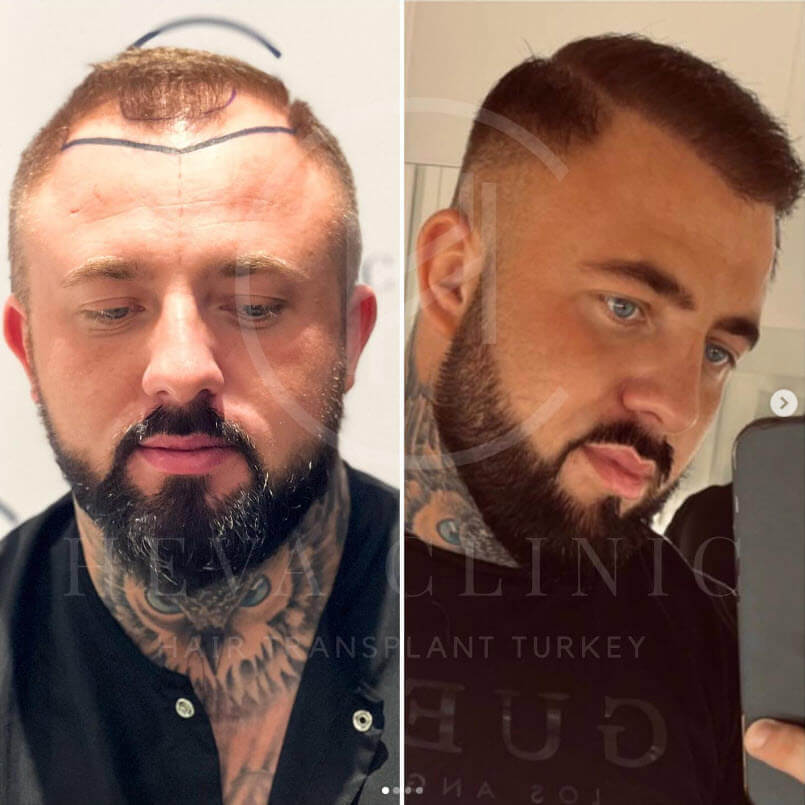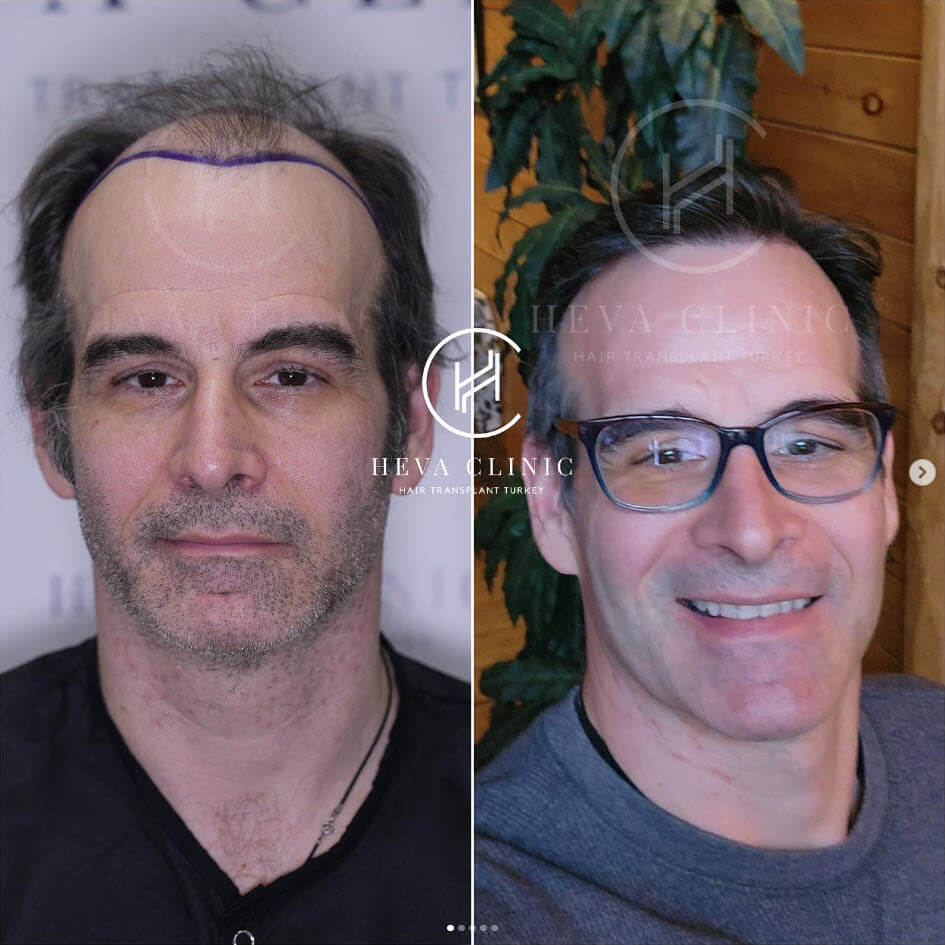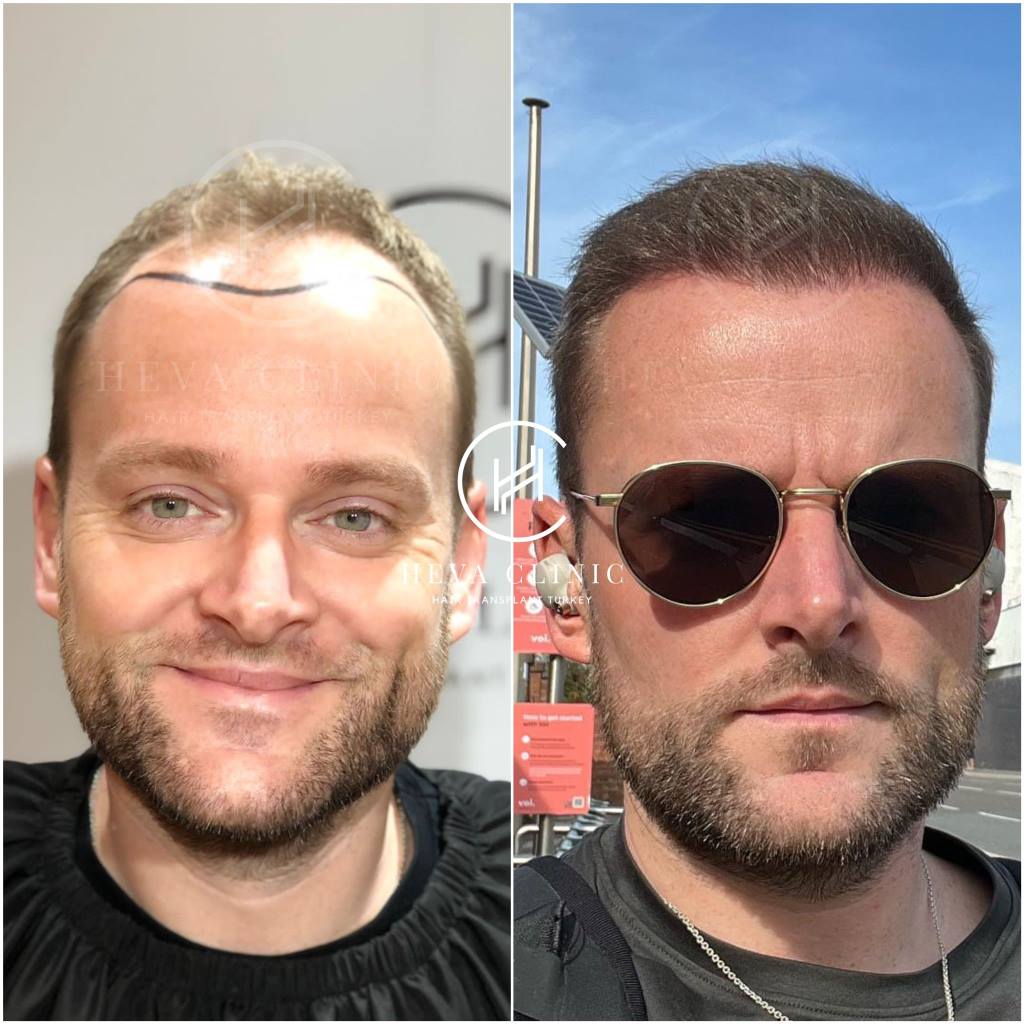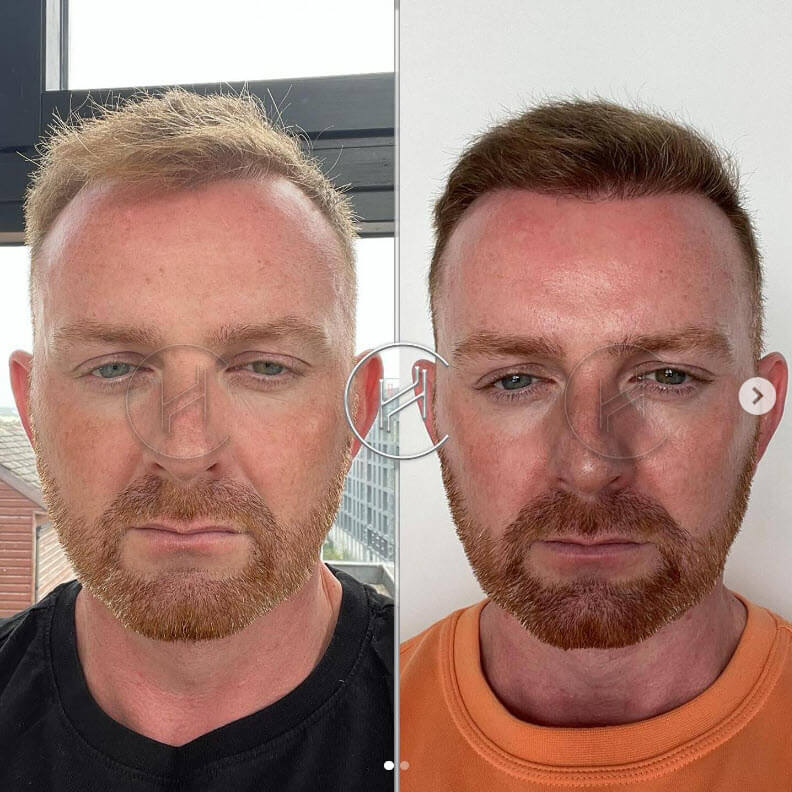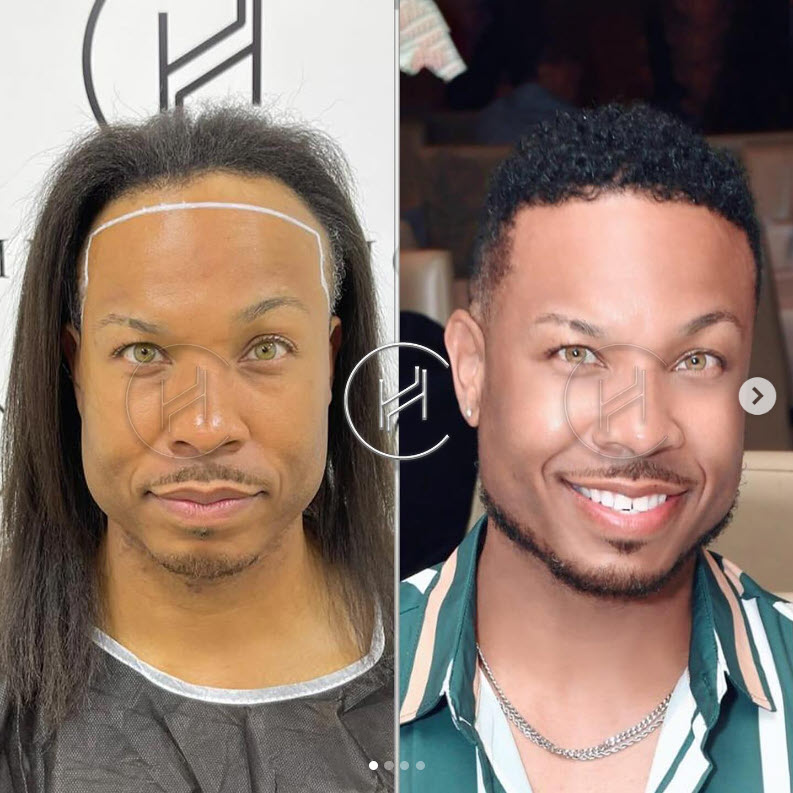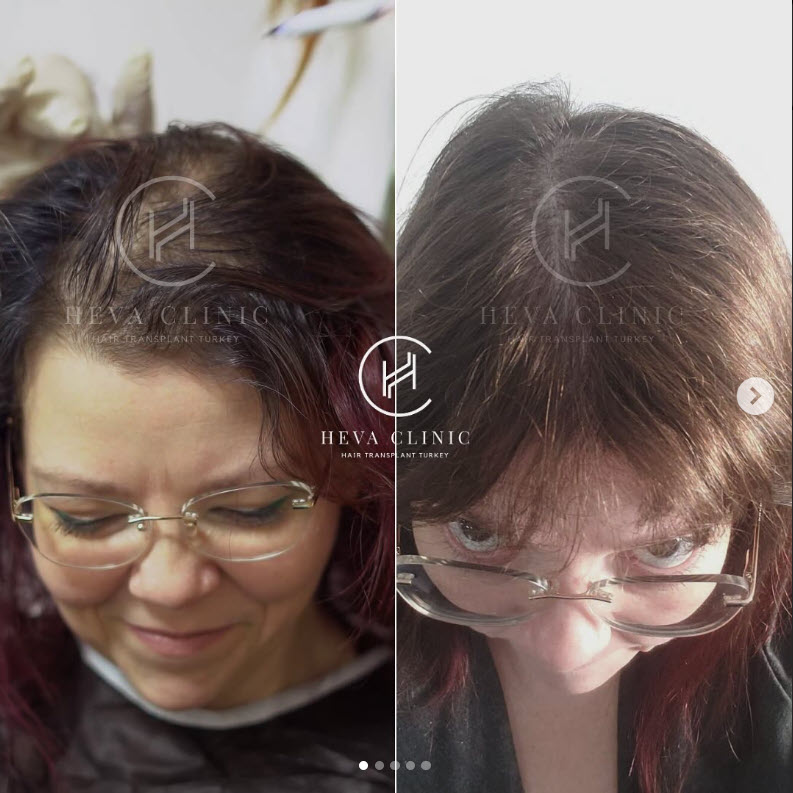All hair types are beautiful, and none is superior to the other. As you learn more about the different hair types that exist, you will discover that each one has its distinctive features. There are four main types of hair: Types 1, 2, 3 and 4.
But what makes each hair type unique, and how can you tell what your hair type is? In this article, we will explain the different hair types and provide further information on to identify the category your hair falls under.
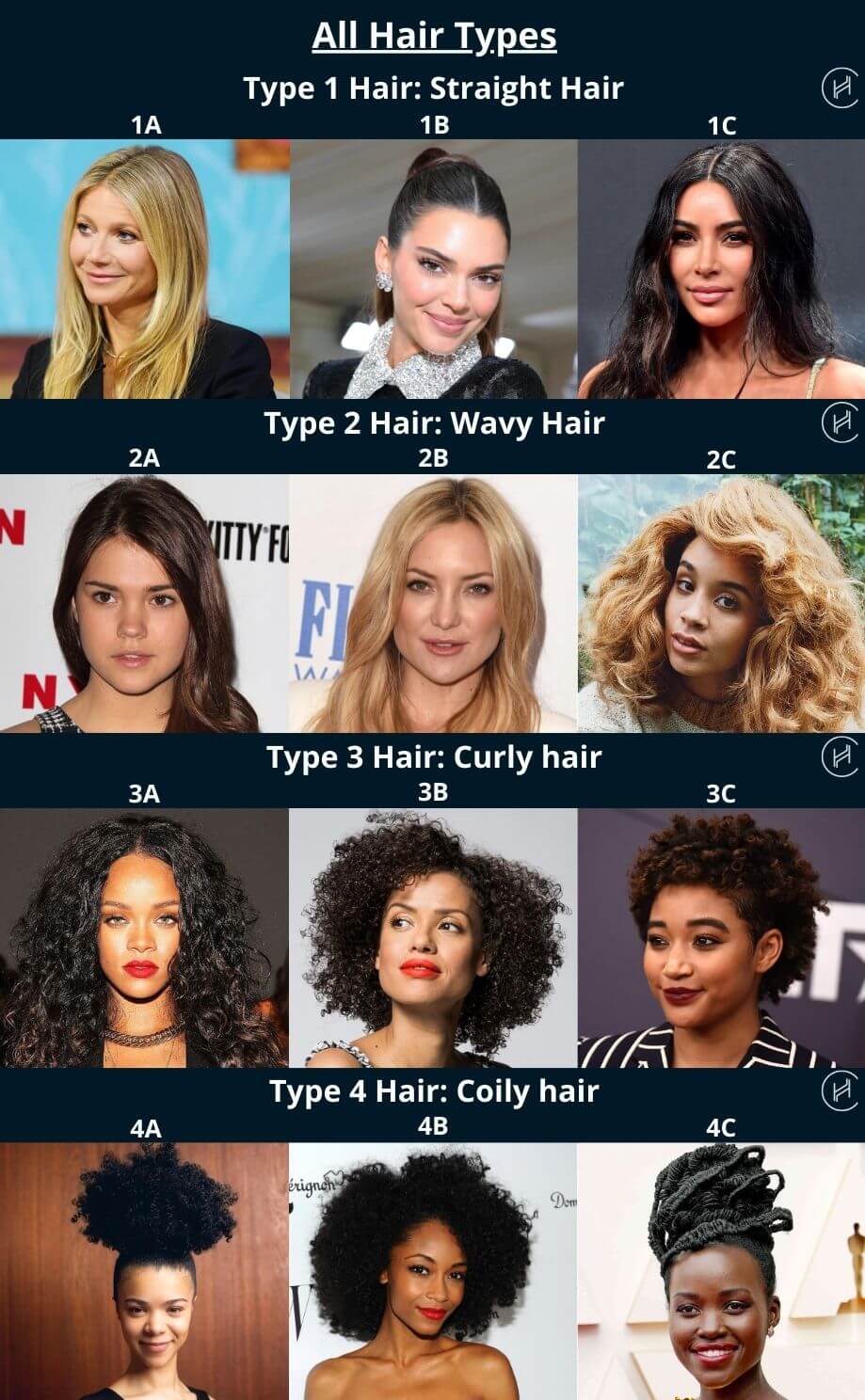
What are the Different Hair Types?
There are four main hair types. These hair types are classified according to the different hair patterns which are straight, wavy, curly, and coily hair which are otherwise known as type 1, 2, 3, and 4 hair types respectively. What mainly differentiates each type is the pattern.
Interestingly, each hair type also has a range of different patterns. So for instance, where two people have Type 1, the textures of their hair may vary significantly. Thus, we have types A, B, and C to indicate the texture of a person’s hair alongside its pattern. Therefore, altogether, there are 12 types of hair namely: 1A, 1B, 1C, 2A, 2B, 2C, 3A 3B, 3C, 4A, 4B and 4C.
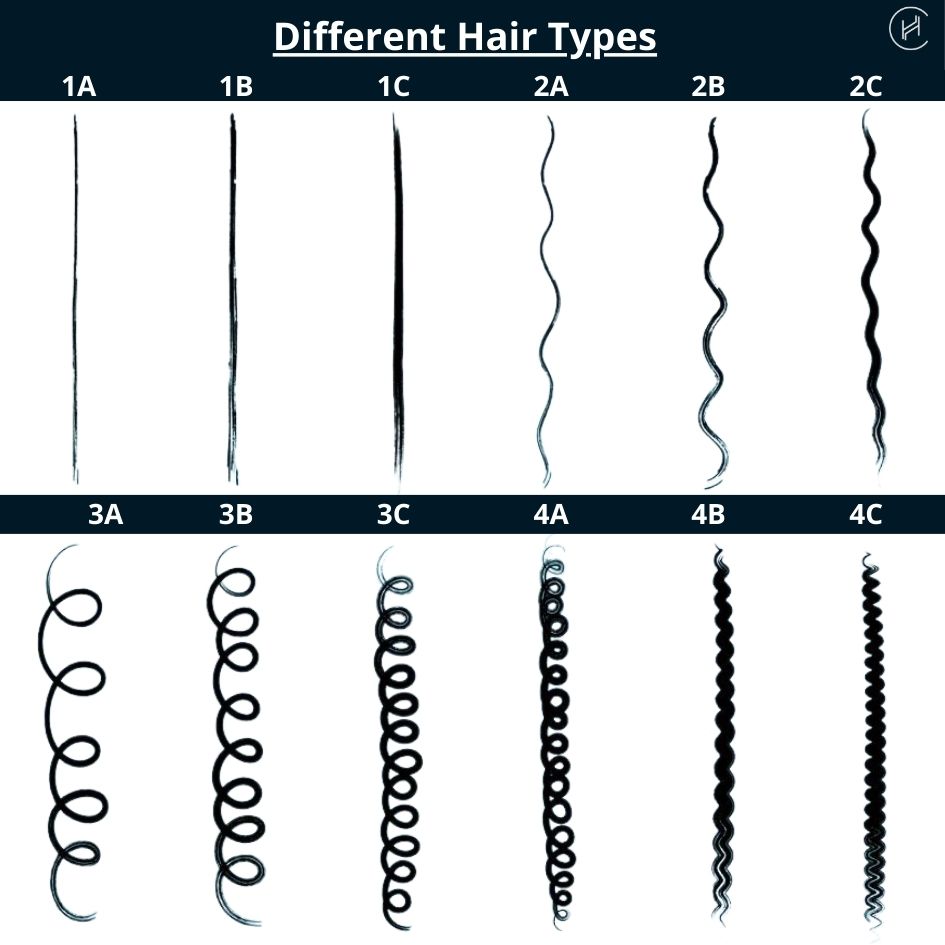
Main Differences Between Type 1, 2, 3, and 4 Hairs
Knowing the features that distinguish the different hair types from one another is important so people can make the best decisions when it comes to catering for their hair. Here are some important differences between all the hair types:
- Maintenance
Typically, type 1 and 2 of hair require little maintenance. Although they are different hair types, you can get by with a diligent wash using sulfate-free shampoo and lightweight products for both hair patterns. On the other hand, types 3 and 4 hairs require lots of moisture and gentle application of products in order to ensure that products coat your curls thoroughly.
The wispy nature of straight and wavy hair puts them at risk of product buildup, which could affect the appearance of the hair. On the other hand, curly and coily hair requires special attention to ensure moisture retention, as this is the only way to keep your curls intact.
- Frizz
When it comes to frizz, types 3 and 4 hair are highly susceptible. Frizz occurs when your hair lacks moisture, causing the strands to rise irregularly. Type 2 hair may also experience frizz, especially if your hair falls within the medium to coarse spectrum, which is Type 2B and 2C. Compared to the others, type 1 hair tends to frizz the least because they have a smoother cuticle structure.
- Styling
When it comes to straightening and curling, type 2 hair is the most amenable. This hair type retains curls and also responds better to straightening, unlike the others. Compared to the other hair types, retaining curls in hair type 1 is difficult, especially for 1A. For hair types 3 and 4, straightening will require lots of product and heat to prevent them from returning to their natural curly state.
- Shrinkage
Type 1 hair does not typically experience shrinkage. This means that even when damp, straight hair stays straight— it does not shrink or reduce in length, unlike other hair types. However type 2,3 and 4 hair experience different levels of shrinkage, with type 4 being the highest. For wavy, curly, and coily hair types, shrinkage is typically a sign of healthy hair.
Type 1 Hair: Straight Hair
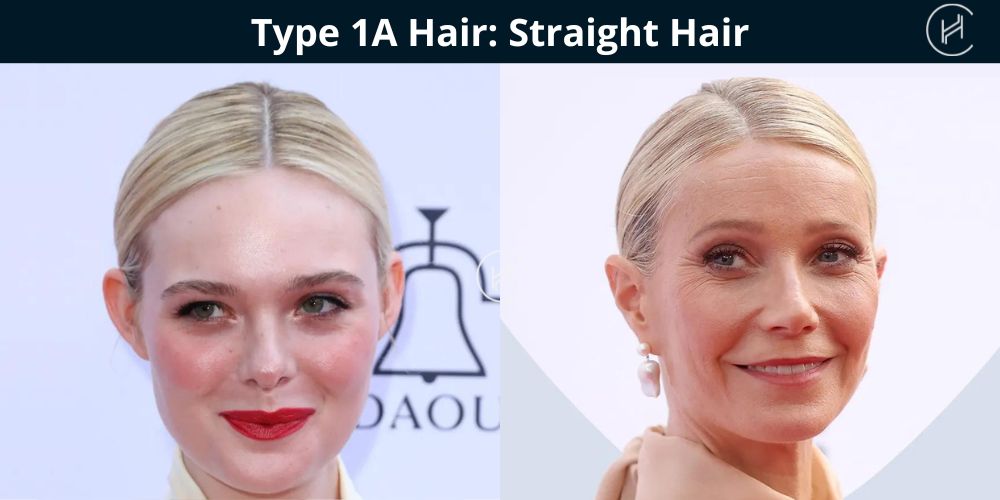
Type 1A
Amongst the different hair types, type 1a hair is the straightest. This hair type is finely textured, smooth, and lightweight. Interestingly, type 1a is the least common among all hair types. As a matter of fact, this hair type does not retain curls due to its texture and it also does not suffer shrinkage.
On the plus side, people with 1a hair can maintain a straight structure without frequent straightening. However, this hair type is fragile and is known to suffer breakage and damage when strained. For example, high ponytails and buns, and applying frequent high heat could strain the tips of your hair and cause them to break away.
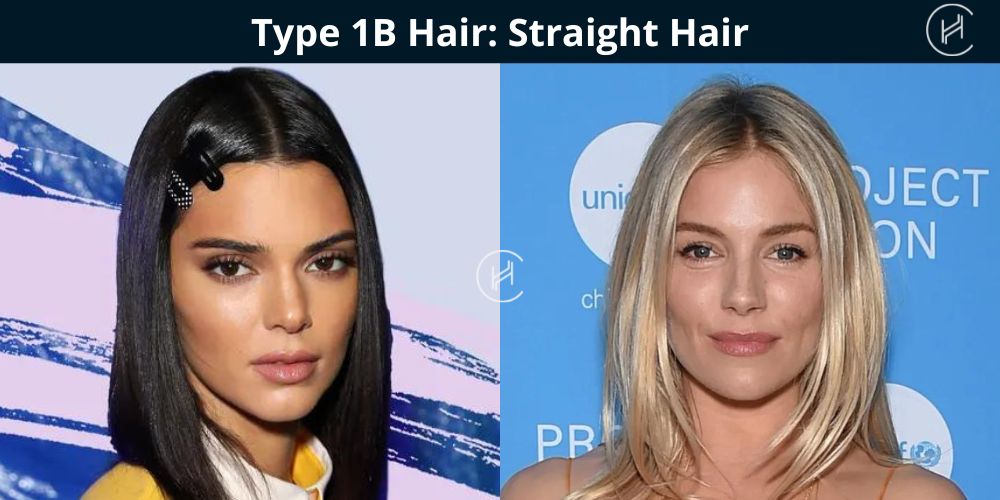
Type 1B
1b is the most common version of type 1 hair. It is also straight but with a slightly thicker density. It is categorized as medium texture which gives it a fuller outlook compared to 1a. Unlike 1a hair type, 1b is pliable and can be curled. In its natural state, you may notice a slight curve among the hair strands. Additionally, 1b hair type is fragile, which makes it essential to be careful when brushing or detangling it to avoid split ends and breakage.
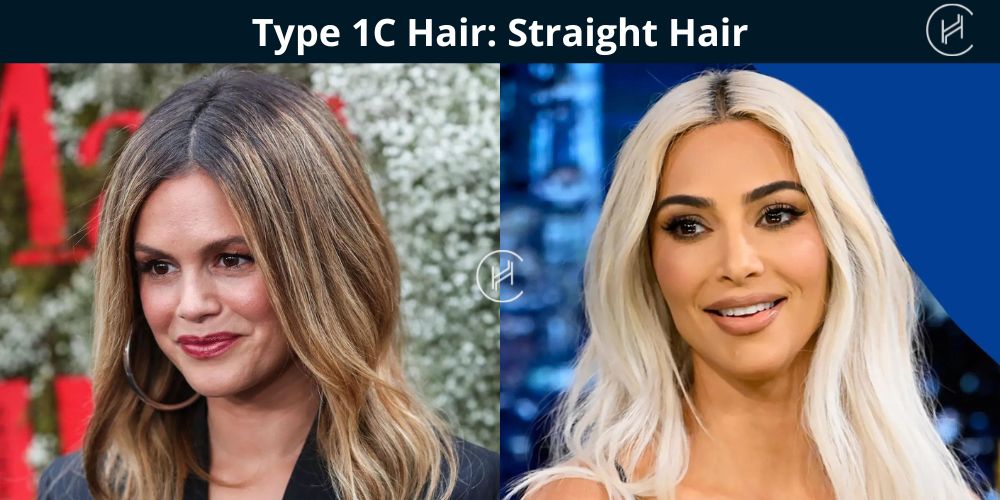
Type 1C
1c hair falls under straight hair category but it is different from the other hair types because it has some loose waves in it. You may notice slight curves appearing from the roots especially when your hair is wet.
Another distinct difference between 1c and the other type 1 hairs is that it has more volume than the others and is more likely to frizz. For frizz control, use moistening shampoos and conditioners.
Type 2 Hair: Wavy Hair
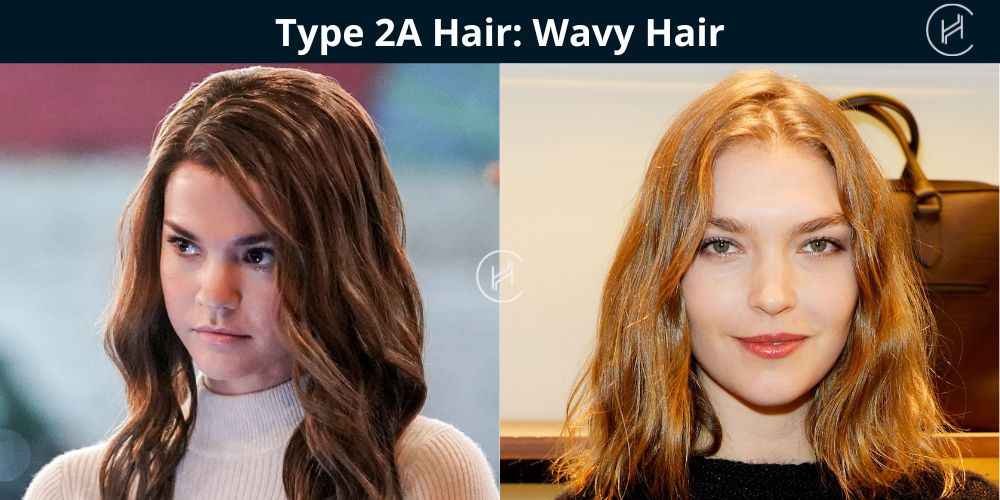
Type 2A
Type 2 hair is wavy. For 2a in particular, the waves are often S-shaped. Other times, they could appear to be very loose curls or partly straight and partly curly. 2a hair texture is fine but this often results in a frizzy look. This hair type tends to hold no definitive curl pattern, giving it the appearance of random curves and curls on straight hair.
In comparison, 2a shares the thin nature of Type 1 strands and tends to break off or shed. To prevent losing some hair, work through your strands gently while brushing and use minimal heat on your hair.
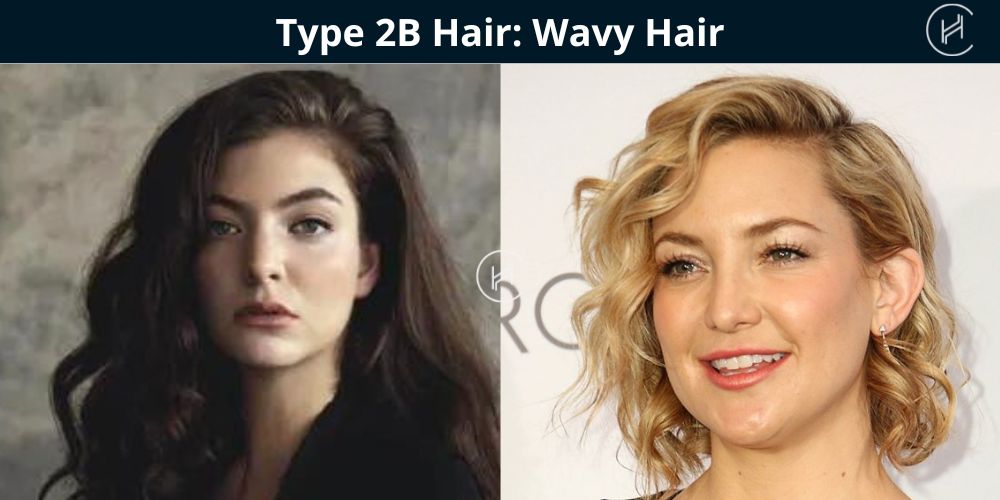
Type 2B
In terms of thickness, 2b has medium thickness. It is thicker than 2a but it’s not as thick as 2c hair type. For type 2b, the S shape associated with type 2 hair is more defined and the hair strands typically curl unto one another. The curls in 2b hair are most defined when the hair is wet, so you may ascertain your hair type by adding some water or examining it after a fresh wash.
2b hair type is prone to shrinkage, but only in small degrees. If you have frizz and flyaways, these are signs that your hair is dry and needs some care. Thus, lightweight products are advised to retain a decent amount of moisture.
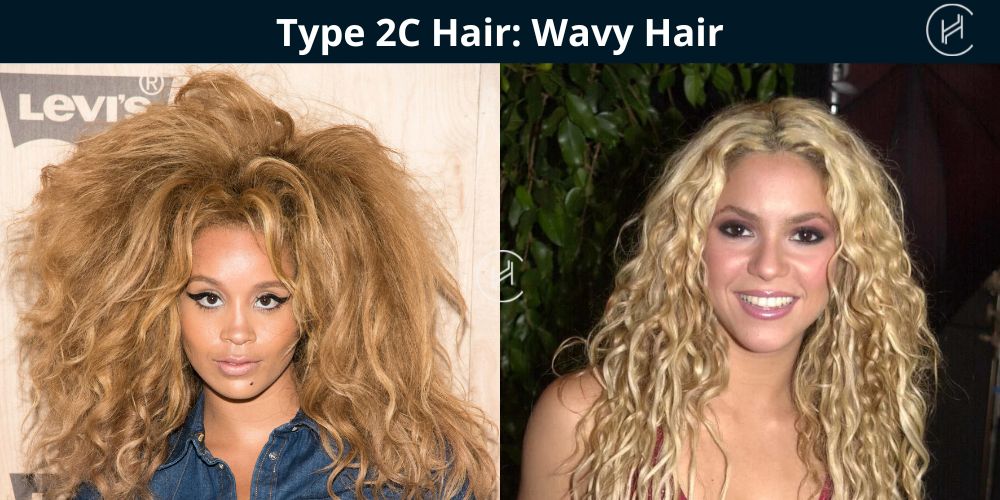
Type 2C
2c hair waves are best described as loose corkscrews. They retain the S-shaped pattern of wavy hairs but have a coarse texture, which gives them more volume and thicker strands. Because of their texture, they are easier to style than the other type 2 hairs. Also, they have a stronger curl retention and can be styled in definitive curls that will stand out better than on the other Type 2 hairs. This subtype, however tends to hold a buildup of oils and products that would weigh down the curls or affect your hair styling.
Type 3 Hair: Curly Hair
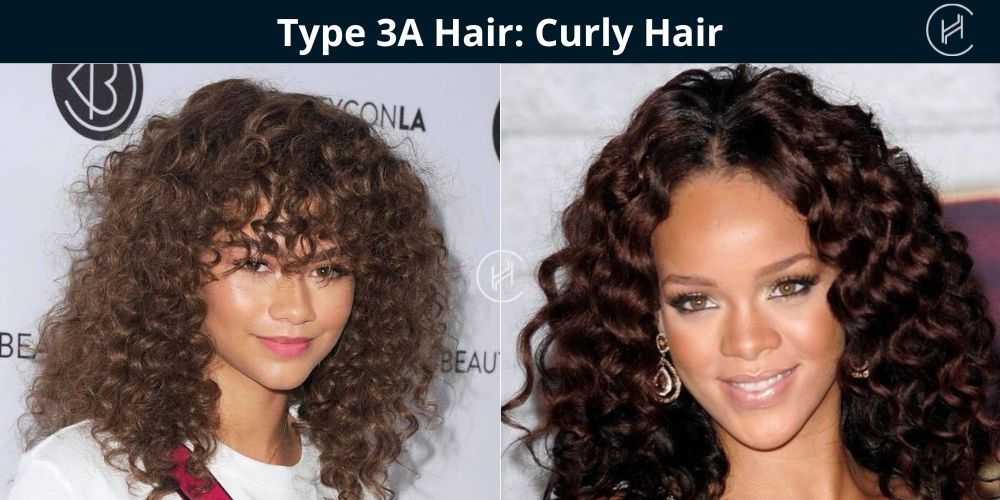
Type 3A
3a hair type is the first category on the spectrum of curly hairs and another to be mistaken as wavy. This hair type holds distinctive curls usually arranged in a loose pattern. The texture of the hair is fine and thinner than 3b and 3c.
As far as retaining the curly look goes, 3a holds well. This hair type is easy to manage with low-maintenance styling and wash-and-gos. Also, it tends to get weighed down when too many products are applied. You could also wear it flat, although heat protection is required to preserve its fragility.
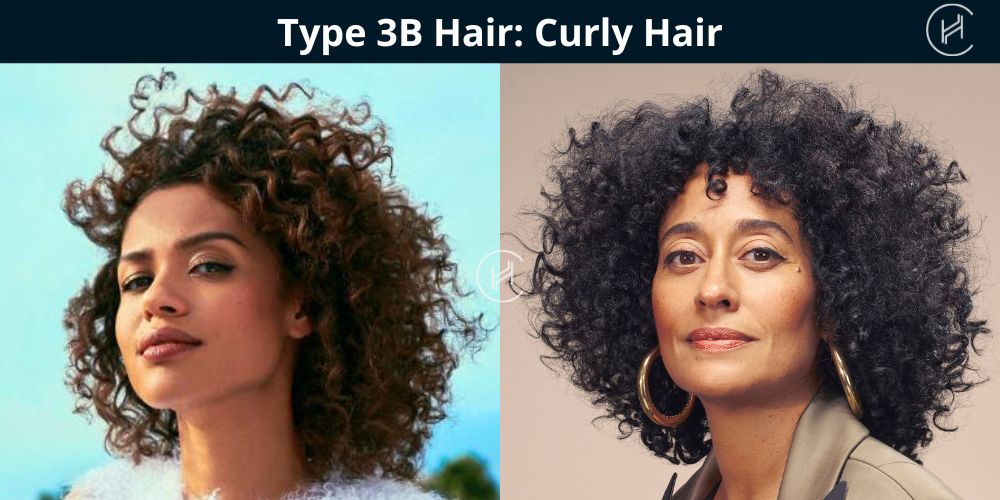
Type 3B
Think of smaller S-shaped curls; this hair type features medium thickness and ringlets of bouncy curls. It is often fuller and has a higher density than 3a hair type. In some cases, you may have different curl patterns running through the hair. Unlike 3a, more attention is required to hydrate 3b hairs and preserve the curls.
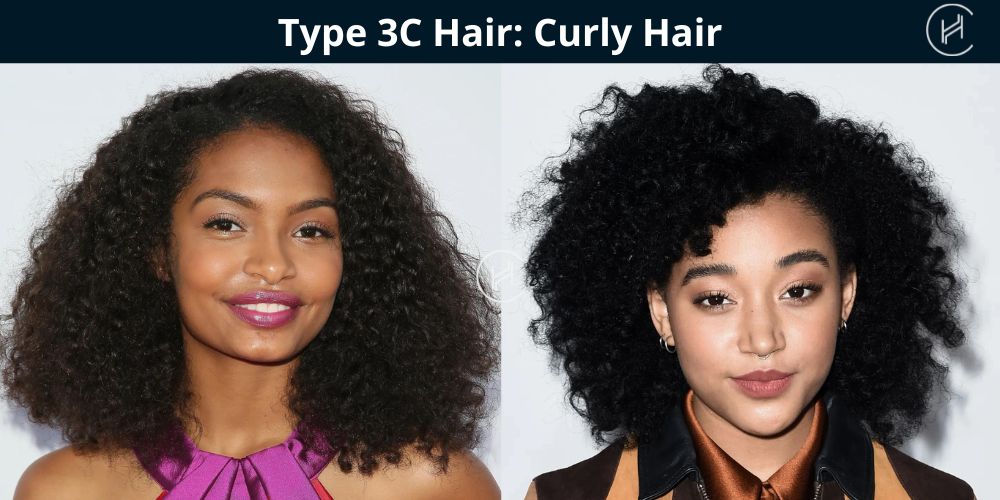
Type 3C
Here is the thick end of the type 3 spectrum. 3c hair is thick and coarse, with tighter curls or ringlets. The curved shape is very much defined and more so when damp. Shrinkage plays a big role in determining this hair type’s length and overall outlook. Compared to the other curly hair types, there is a higher risk of frizz and breakage when dryness persists. Fortunately, many hydrating masques, treatments, and routines are dedicated to this curly hair type. Utilizing these resources would go a long way in maintenance.
Type 4 Hair: Coily Hair
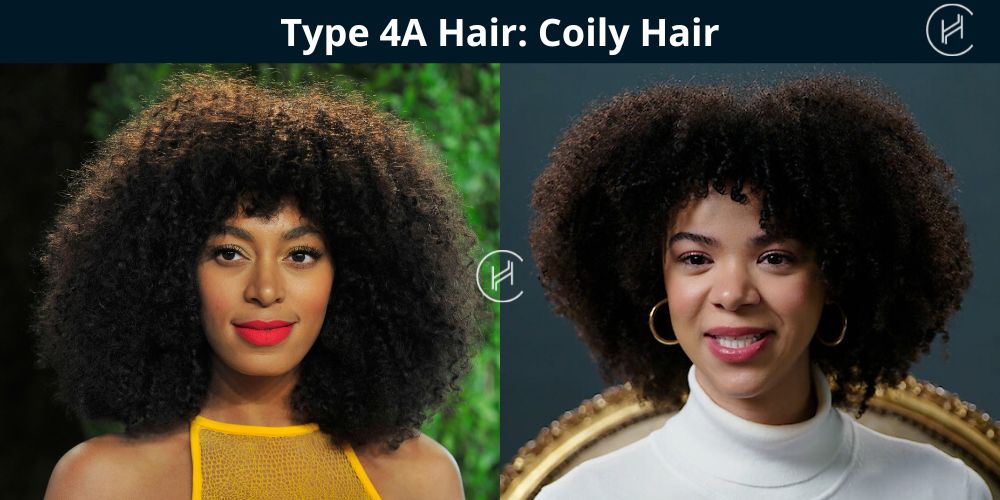
Type 4A
Otherwise known as kinky or afro hair, all type 4 hairs are in coils. Specifically, type 4a is shaped in perfect coils.
The coils are tight and spiral over all through. Instead of loose curls or ringlets, 4a features tight coils like you would if you wrapped a piece of thread around a skewer. Compared to type 1, 2, and 3 hair types, type 4a is more prone to dryness and can be difficult to detangle when dry. It requires a moisture-rich hair routine.
Also, it has a higher density than the previously mentioned hair types. Although the hair type can be straightened, ensure to use heat protection before using heat to straighten your hair to avoid heat damage. However, out of all the type 4 hair, 4a is the easiest to maintain.
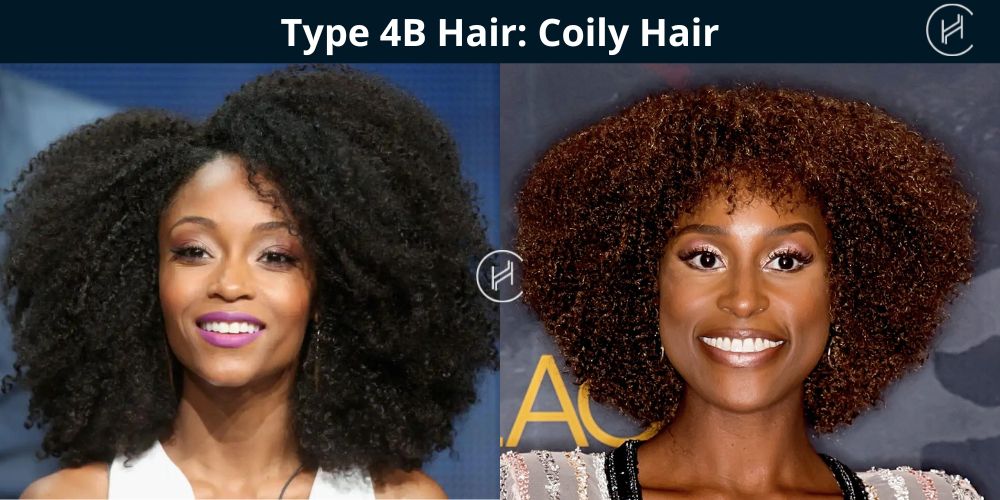
Type 4B
Here, you have coily hair with medium thickness. The coils may appear in a zigzag manner, with a fuller body. 4b hair type has a higher density than 4a, thus hair strands are often entwined. This hair type tends to go through more breakage during detangling or styling than 4a hair. 4b hair is best handled when damp or properly moisturized.
Depending on the density or porosity of the hair, always carefully distribute hair products from the roots to the tips when applying them.
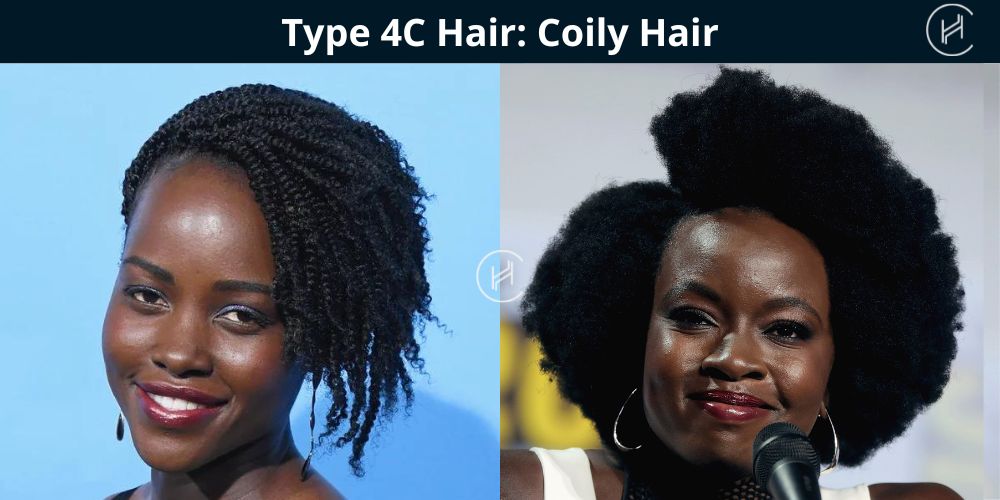
Type 4C
Type 4c is the thickest hair and perhaps the most fragile in this category. They have the tightest coils and are the most difficult to detangle. They require high levels of moisture and care. When working with 4c hair, it is important to detangle gently to avoid split ends and shedding. This hair type can maintain a straight texture for short periods. You may need regular treatments and heat applications to keep it from reverting to its coily state.
Out of all the different hair types, 4c hair is the most prone to frizz and shrinkage. However, a targeted hair care regimen can make all the difference.
How to Find Out Your Hair Type?
For most people, after learning about all the hair types that exist, the next step is to find out which of these hair types their hair belongs to. If you are in this category, this guide is for you.
As earlier stated in this article, your hair type is distinguished by its pattern and texture. These features help to differentiate your hair from other hair types. There are quite a few tests you can conduct to find out which category your hair falls into among all the hair types.
But the first step to take is to determine whether your hair pattern is Type 1, 2, 3, or 4. Then you may go ahead to examine your texture to determine whether your hair falls in the A, B, or C category. Put them together, and you will have your hair type!
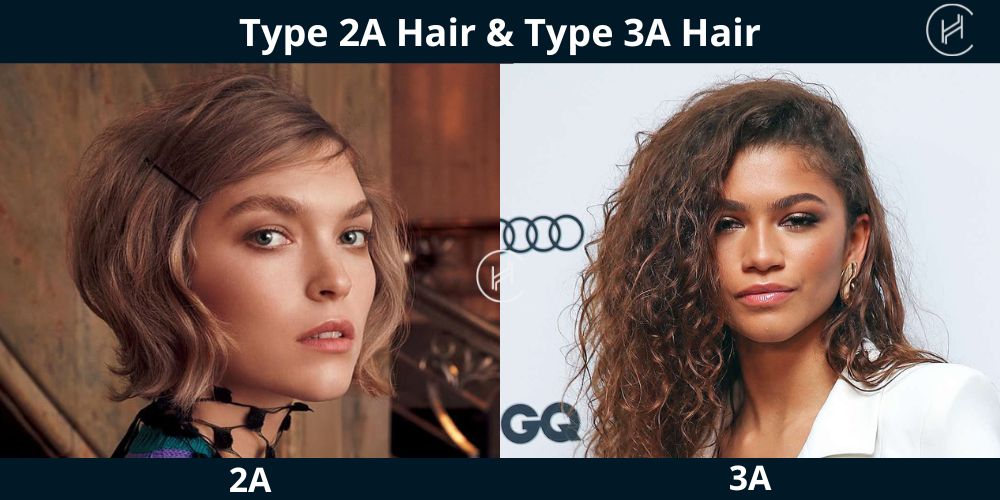
Pattern Test – Wash & Air Dry
Pattern tests are designed to help you discover which hair type your hair belongs to. The appearance of your hair is usually a strong indication of its pattern. However, it may be hard to determine accurately due to the presence of treatments and chemicals in most hair care routines. So, we recommend the wash and air drying test for accurate results.
Your hair reverts its most natural state when shampooed. So, your next wash day is a good time to conduct this test. First, wash your hair and leave it to air dry without adding any products— this includes conditioners, leave-ins, or treatments. Leaving your hair to air dry will not damage it so rest assured that this test is safe.
Next, wait till your hair is dry, then take a look at your strands in a mirror.
- If your hair strands are straight, without curls or coils then you have type 1 hair.
- Type 2 hairs have a slight S curve in them. They are usually wavy and thicker than straight hair.
- If your hair is curly, with ringlets or defined curls, then you have type 3 hair.
- Finally, your hair is type 4 if it has tight coils or spirals. This is common among people of African/ African-American descent.
Note that some people have mixed patterns running through their hair. So, your hair could look slightly wavy but mostly straight. Or your curly hair could seem to have some loose curls. The trick to finding your hair type in such cases is to choose the most dominant pattern.
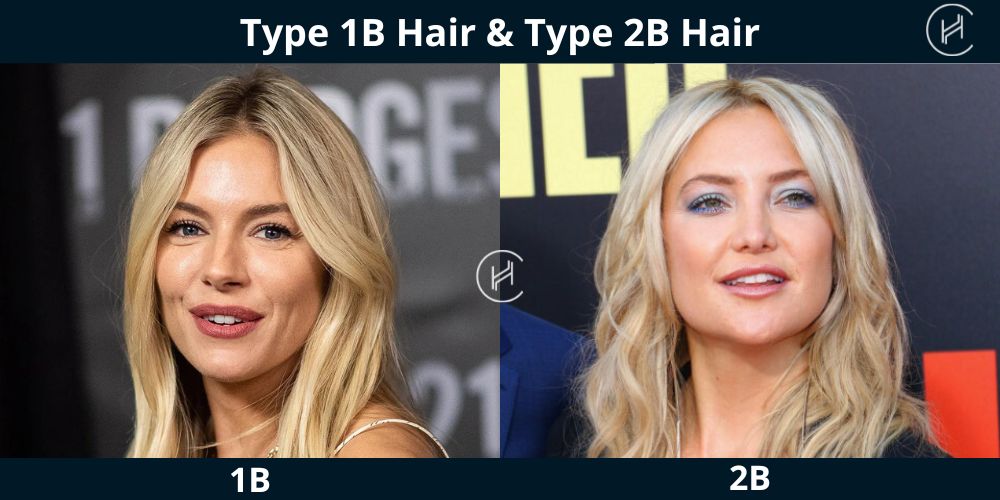
Texture Test – Thread or Finger Test
Running a texture test on your hair is the key to finding the other half of the puzzle. Here, the goal is to determine whether your hair texture is fine, medium, or coarse. All hair types belong to categories A, B, or C, respectively. Since you aim to discover which of the different hair types you fall under, it’s essential to have both the pattern and texture tests.
Find out which of the different hair types your hair belongs to by using either the thread or finger tests.
Thread Test
For the thread test, you need a piece of sewing thread and a strand of hair from your hair brush or comb. Place your hair beside the thread and compare the thickness of both. You can do this on a clear surface for accurate results.
If your hair strand is thinner than the thread, then your hair is fine and falls under Type A. If your hair strand looks almost as thick as the thread or thicker, then your hair is medium: Type B. Finally, if the strand of hair is thicker than the thread, your hair is coarse or thick: Type C.
For the best results in this test, use a thread of matching colors with your hair. So if your hair is dark colored, use a similarly dark-colored thread like black, dark gray, or a shade of brown close to your hair color.
Finger Test
Here, you only need to feel your hair with your fingers. Separate a strand of hair on your head or from a brush and run your fingers over it. The goal is to feel the texture of the strand.
If you can’t feel it as you rub it between your fingers, then your hair is fine or Type A. If you catch a slight feel of it, then your hair is medium or Type B. Finally, if you can feel the strand strongly between your fingers, your hair is coarse or Type C.
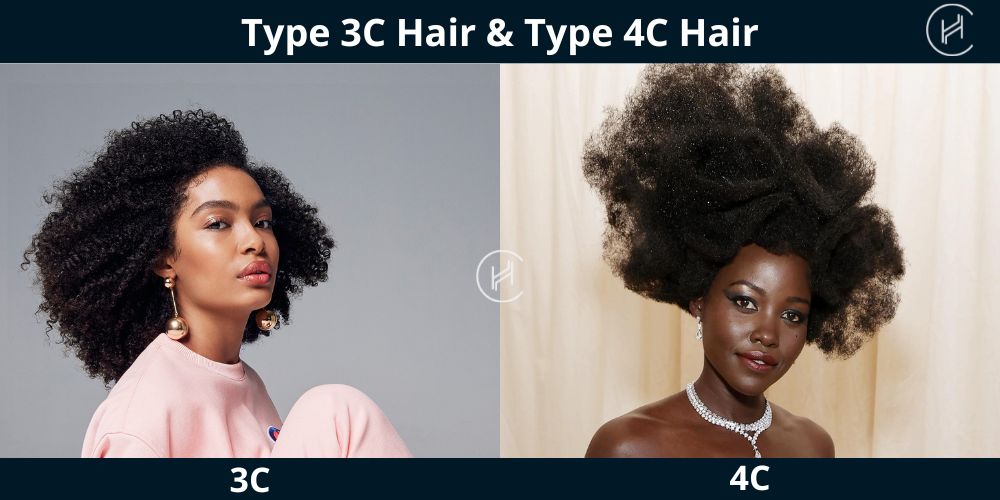
What is My Hair Type?
There are 12 combinations under which all hair types fall. Specifically, your hair type is a combination of your pattern and texture test results. For example, if your pattern is Type 1, and Texture is B, your hair type is 1B. Or if your pattern is Type 3 while your Texture is A, your hair type is 3A. So, to find out which of the different hair types yours belongs to, simply conduct the tests explained above. There are no wrong answers here!
How to Take Care of Different Hair Types?
When we say hair type under this heading, we are referring to the four main hair types: Type 1, 2, 3, and 4. Now, these four different hair types have unique features and needs. As a result, it’s best to adopt methods that include using products and treatments designed specifically for your hair type.
Here are some helpful tips highlighting how to take care of the different hair types:
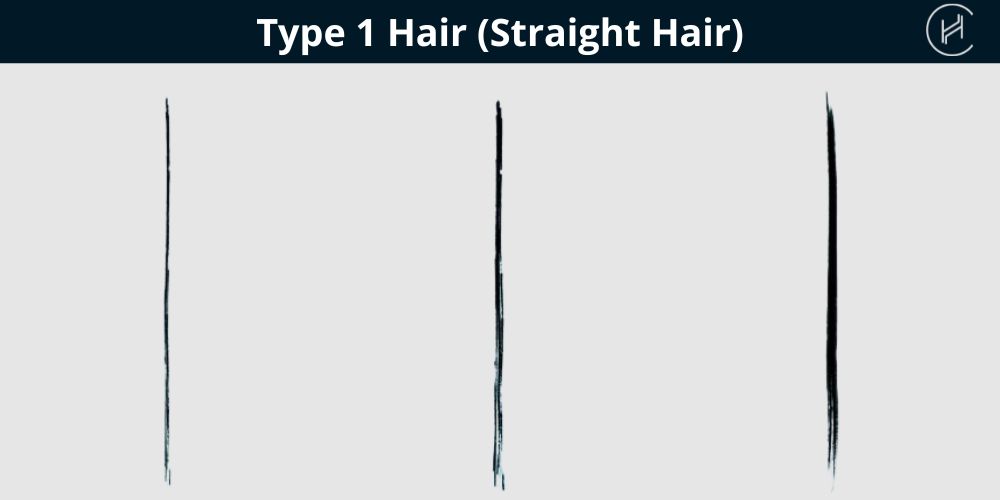
Type 1 (Straight Hair) Care
The first rule of caring for straight hair is to use products designated for straight hair. It is okay to use a curl-maintaining product when you style your hair. However, styling will not change the nature of your hair. So, it’s important to use products designed to moisturize and preserve the luster of your naturally straight hair.
You should also avoid using heavy creams or oils. These tend to weigh down your hair without adding real value to its health. So invest in sprays and light products.
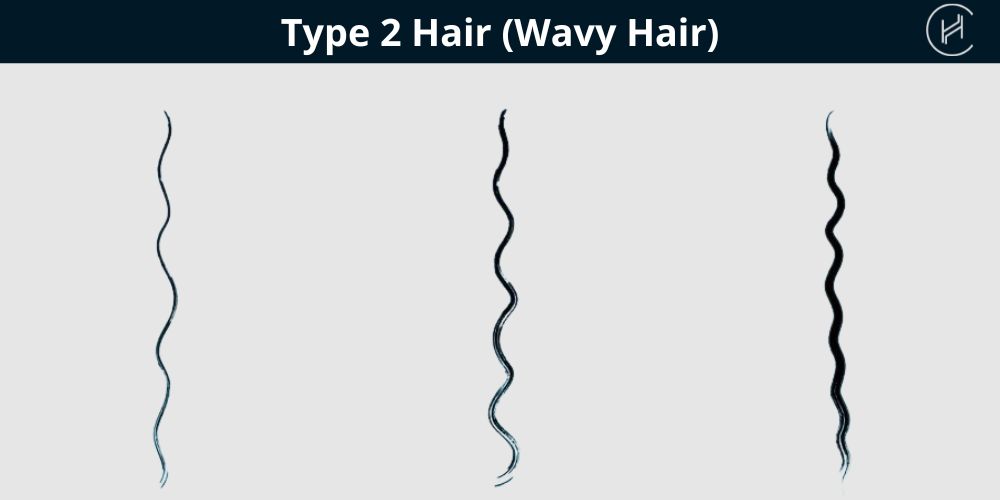
Type 2 (Straight Hair) Care
Hair care for type 2 hair is similar to Type 1. They both thrive better when you use light products and gels rather than butter or thick creams. As you already know, wavy hair has loose curls, usually from the middle to the tips. So, your hair needs extra attention to maintain the curl pattern. Using heavy products would weigh down your strands, causing the curls to drop or look less defined.
Depending on whether your Type 2 hair is an A, B, or C, you may need to put in some extra effort if you wish to wear it straight. 2C hairs are the most wavy of the lot and can sometimes become frizzy. It helps to invest in shampoos and conditioners that retain moisture to keep frizz at bay. Also, mousses or sprays are a good choice for holding curls.
It is important to note that 2A hairs have a lighter texture, so you run the risk of heat damage when you apply constant heat, whether for straightening or drying.
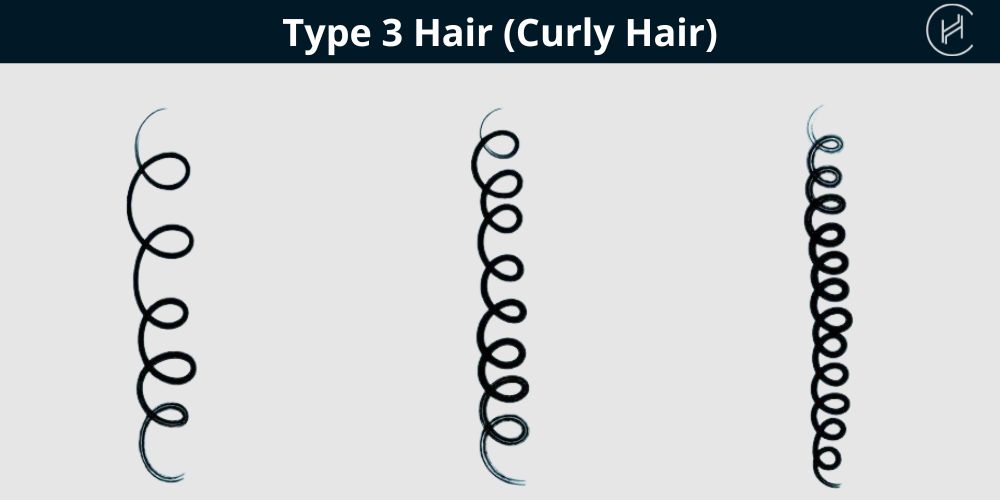
Type 3 (Curly Hair) Care
The curlier your hair, the more moisture it needs to stay healthy. Curly Hair or Type 3 hair is best taken care of with shampoos and conditioners that encourage moisture retention. Deep conditioning treatments also help to restore curls to their best state. Your hair care routine must include anti-frizz conditioners as well as a light hair oil to lock in the moisture.
Unlike Type 1 & 2 hairs, Type 3 hair (A, B & C) requires gentle detangling. It is best to only brush or comb through your hair when damp. This helps to reduce breakage and encourage length retention.
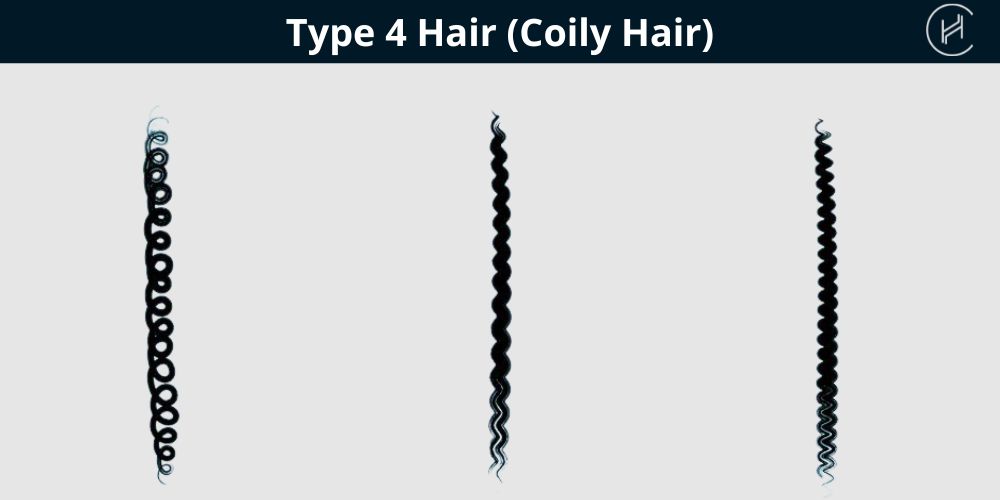
Type 4 (Coily Hair) Care
Type 4 hair has the tightest coils and spirals of all the other hair types. Hair care for the different hair types in this category (4A, 4B & 4C) is quite similar to Type 3. Due to the coily nature of type 4 hair, extra care must be taken to ensure that your products and treatments are absorbed properly into your hair. So. When applying butters, masques, oils, or treatments, ensure that you detangle your hair and work the product into the full length of your hair.
Note also that Type 4 hair requires patient care. If you are new to taking care of your hair, then you must prepare to be as gentle as possible. Always work with damp hair. The moisture from spraying water or a leave-in conditioner makes it easy to detangle your hair without breakage.
You can wear your Type 4 hair straight, with the help of a straightener and heat protectants. However, be careful to use heat sparingly as frequent exposure would weaken your hair and cause it to break severely.
FAQs
Among all the hair types, curly hair falls under Type 3. Now, there are different textures and structures for curly hairs. The curls can range from loose spirals to defined ringlets depending on whether you have type 3a, 3b or 3c hair. So, you can have two people with curly hair although their curls look different. One of them may have thicker or curlier hair or even respond differently to products designed for curly hair.
While all type 3 hair are curly, there are subtle differences that separate them, thus requiring slightly different hair care.
Of all the different hair types, type 1A is the rarest hair type. The hair type features straight hair with a fine texture. Characteristically, it is difficult to maintain curls in this hair type when styled because of its straight nature.
To say that Type 1A hair is rare does not mean that other Type 1 hair (1B & 1C) are also uncommon. In fact, both hairs are quite common. Also, several people have Type 1A hair, but compared to the overall population and other types, it is safe to say that it is the rarest among all hair types.
The most common hair type is Type 1B. In general, the medium subtype of the four main types of hair is more common than the other two. That is, 1B, 2B, 3B and 4B. Type B hair types are thick, and strong compared to type A, but not coarse like type C. Therefore, it is easy to manage and style.
As it stands today, there is no way to permanently change your hair type. Whether your hair is straight, wavy, curly, or coily is determined by the nature of the hair that grows from your hair follicles. Therefore, the focal point should be on the structure of the hair in its natural state.
However, you can temporarily alter your hair texture by using products to help to manage and style it according to your preference. For example, straight hair can be curled, and curly hair can be curled in a different pattern than its original look. Also, curly hair may be altered to look straight by using products with straightening chemicals like relaxers. However, although relaxers may provide a long-term straightening solution for people with kinky hair, they also have their side effects and can cause hair damage.
Regardless, none of these options can permanently change your hair type.
Are all Hair Types Suitable for Hair Transplant?
Yes, all hair types are suitable for hair transplants. Whether you are a Type 1, 2, 3, or 4 (A, B, or C) you can get a hair transplant provided you meet the health specification provided by your doctor. It is however noteworthy that the different hair types have varying levels of suitability. Straight Hair (Type 1) is known to be the most suitable hair type for transplants. This is because the procedure requires an extraction of hair follicles from a donor area. The nature of Type 1 hair makes it easy to access the scalp for extraction.
On the other hand, curly and coily hairs often have tightly entwined hairs at the roots that makes the hair transplant process more challening. That’s why some clinics do not provide successful results in afro-textured hair transplant.
Key Takeaway
All hair types are beautiful, regardless of the length or color. What matters isn’t how curly or straight your hair is but how healthy. When your hair is healthy, it projects the best luster and texture. Interestingly, it is easier to style your hair in any way you wish to wear it, whether curly or straight, when you give it the best care.
Giving the best care to your hair begins with understanding your hair type and using the most suitable care routine for the different hair types.

